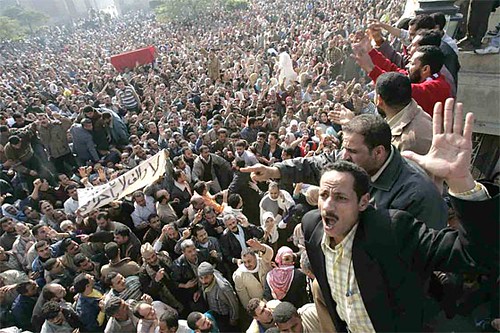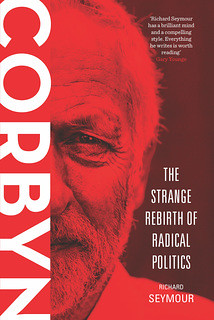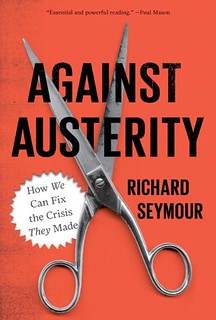Wednesday, March 14, 2007
"Comrades and Brothers." posted by Richard Seymour

Hossam el-Hamalawy has an excellent article about the rapprochement between Islamists and the Left in Egypt. The article traces an arc from the hostility and combat of the 1990s, to the current cooperation against pro-US dictator Hosni Mubarak - which, though an improvement on past relations, remains largely "symbolic" as "leftists and Islamists have yet to join forces to undertake sustained mass actions against their common foe, the regime of President Husni Mubarak." Of course, it is precisely such action that is called for.
I think what's most impressive about the article is how it handles the serious and genuine differences between the left and the Islamists, and especially the conservativism of the Muslim Brotherhood leadership. Hamalawy traces a generational change in the attitudes of both leftists and Islamists - whereas previous communists loyal to the Soviet Union had denounced Political Islam as nothing more than "fascism", "in the late 1980s, small circles of Egyptian students, influenced by Trotskyism, gathered to study, eventually evolving in April 1995 into an organization named the Revolutionary Socialists’ Tendency". Unlike the orthodox communists, their slogan was "Sometimes with the Islamists, never with the state". They united with the Islamists when they were attacked by the state, but challenged the Muslim Brothers "on issues such as freedom of expression and the rights of women and Coptic Christians. Whenever they felt the Brothers wanted to impose sex segregation in the classroom, or clamp down on campus theater and art, or whenever the Brotherhood’s Supreme Guide made sectarian comments about the Copts, the socialists’ 'galleries' would carry vehement denunciations".
The Revolutionary Socialists grew from a handful of activists to being a serious force due to its militancy over Palestine, Iraq and the regime's attempts to remove subsidies for staple foods, while the Muslim Brothers initially abstained from militancy and even denounced "socialist sabotage". Still, the protests over the Palestinian intifada in particular were radicalising the grassroots and especially the youth of the Muslim Brotherhood, and they were increasingly frustrated with the fact that the left was taking the initiative:
The anti-war movement, successor of the pro-intifada movement, evolved again by the end of 2004 into an anti-Mubarak movement, composed of two organizations. One was Kifaya (the Egyptian Movement for Change), a coalition made up primarily of members of the breakaway Nasserist faction Karama, individuals from the liberal al‑Ghad Party, figures from the Egyptian Communist Party and veterans of the 1970s student movement. The other wing was the Popular Campaign for Change, which was more Marxist in composition, and included the Revolutionary Socialists, left-wing human rights activists and independent leftists. The two organizations more or less fused together in the months to follow. Kifaya’s sometimes quixotic and theatrical street actions attracted public attention, and helped to break taboos in Egypt’s political life by issuing direct challenges—without euphemisms—to the president and his family.
And then Brotherhood activists "held talks with Revolutionary Socialists and independent leftists, resulting in the launching of the National Alliance for Change in June 2005." Since then, despite early inertia, the Revolutionary Socialists and the Muslim Brothers have co-founded the Free Student Union movement in an effort to create a radical grassroots movement, in which relations improved again:
‘Abd al‑‘Aziz Mugahid, a Brotherhood activist and president of FSU at Helwan University, speaks enthusiastically of the “brotherly spirit” on campus. “The socialists intervened to help us out in solidarity demonstrations with our sisters who were expelled from the dormitories because they wore the niqab, and they stood by us when the administration expelled more than 400 students for security reasons. These joint activities were not frequent before.”
The article goes on to describe changes in the Muslim Brotherhood cadre, in the strategy of the leadership, in their growing integration, the shifting focus of the radical base and so on. Read the whole thing.










